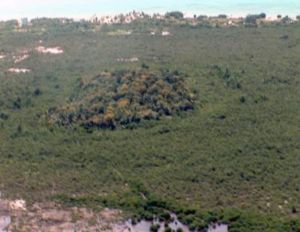

Location: Ambergris Caye Island
Tel. 501-227-0518
Marco Gonzalez is an ancient Mayan pre- Columbian archaeological site situated in the Southern Ambergris Caye Island in Belize. Marco Gonzalez was an important trading site in the Mayan World. Originally Marco Gonzalez was settled by fishermen around 100 BC, however soon the settlement grew into a large trading community with numerous buildings and rich in artifacts brought from around the Mesoamerica. What makes Marco Gonzalez interesting to archaeologists is the fact that it offers a great collection of items that were made all around the region. Ambergris Caye Island doesn't have many resources and many of pieces of pottery, weapons, tools and other artifacts were brought by Mayan merchants from other places in the area. Marco Gonzalez was abandoned around 1500 AD due to the changing landscape of the island. Shallow lagoon that offered a safe haven for small Mayan ships turned into marshlands full of insects that serve as dangerous vectors for spread of disease.
There are at least 49 distinct structures and
walls within the mapped area of the site. The structures at the
northern end appear to be arranged around plazas, while elsewhere
the building plan appears less formal. All of the structures are
relatively low platforms, ranging in height from 30 centimetres (12
in) to 4.2 metres (14 ft). There are none of the pyramids typical of
other Mayan sites in this region.
Building foundations are
composed mainly of blocks of Pleistocene limestone that was most
likely quarried from local sources. Other building materials include
the queen conch Strombus gigas as well as other shells. Crude
plaster floors were found in some structures, and evidence suggests
that many of the habitations were of pole-and-thatch-roof design.
The site is littered with enormous amounts of broken pottery, as
well as conch shells, chert tools and human bones. There is
considerable evidence of excessive looting.